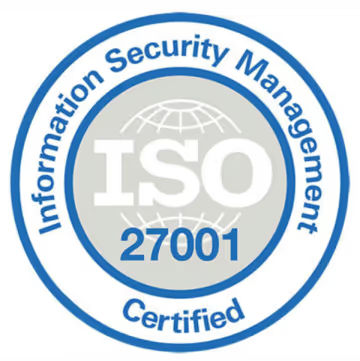Employee Assistance Programs (EAPs) are vital tools for organizations aiming to support employee well-being, enhance productivity, and foster a positive workplace culture. But how do they work? How do you measure the information they provide? Keep reading to understand EAP utilization rates and statistics to get the most out of your program.
Why EAP Utilization Rates Matter
Imagine you invest in an EAP; it seems promising, and you are eager to notice the benefits. But for some reason, after a while, nothing seems to change. Is it the program? Is it your team? We should first start by checking the eap utilization rate.
High utilization rates of Employee Assistance Programs mean that employees are engaging with the support services provided, which can lead to numerous organizational EAP benefits. They may use it often due to:
- Being aware of the program
- Strong trust in confidentiality
- Low mental health stigma
- Communication about the EAP is clear and ongoing
- Leadership openly supports mental well-being
- Services offered are relevant and accessible
- There’s a proactive approach to employee wellness
- The EAP provider is perceived as credible and effective
On the contrary, a low utilization rate could mean different things. Like:
- Lack of awareness about the EAP
- Concerns about confidentiality
- Stigma around mental health support
- Unclear communication from HR or leadership
- Perception that services are not useful or relevant
- Limited access or inconvenient hours
- Lack of trust in provider or employer
- Uncertainty about how to access services
Now that that is clear, EAP utilization statistics matter because they:
- Enhance employee well-being
- Facilitate early intervention
- Boost productivity and focus
- Reduce stress and anxiety
- Empower teams
- Improve workplace morale, employee satisfaction, and loyalty

Average EAP Utilization Rates: Industry Benchmarks and Trends
In short, despite EAPs being impactful in many industries [1], each country and region has its own mental health statistics at work, challenges, and culture. Therefore, it is important to analyze industry benchmarks and EAP trends to better understand the scope of the program you are interested in.
United Kingdom
In the UK, EAP utilization rates vary across industries and organizational sizes. According to the UK Employee Assistance Professionals Association (EAPA), the average utilization rate stands at approximately 10.4%. However, this figure can fluctuate based on several factors:
- Industry Variations: Sectors such as healthcare and social assistance often report higher utilization rates due to the high-stress nature of the work [2]. Sectors like services and charity report higher usage (~11%), while agriculture reports as low as 4.6%.
- Organizational Size: Smaller organizations tend to have higher utilization rates, possibly due to more personalized communication and easier access to services.
- Awareness and Promotion: Companies that actively promote their EAP services and integrate them into their wellness programs and benefits communication plans see higher engagement.
- One-Size-Fits-All Approach: Standardized EAP offerings may not address the diverse needs of a varied workforce, leading to perceptions of ineffectiveness.
- Accessibility: 84% of contact happens via telephone, with only 16% using digital options — potentially a barrier for younger or remote workers.
- Employers’ Passive Management: 31% of UK companies have never evaluated their EAP’s quality or effectiveness [3].
- Cultural Factors: Only 29.5% of EAP calls come from men, despite 1 in 3 men reporting poor mental health due to work [4].
United States
In the U.S., 53% of all American workers have access to an EAP benefit [5], still, EAP utilization rates are generally lower, averaging around 5-7%, as reported by the National Business Group on Health [6]. Several factors contribute to this:
- Stigma: Persistent stigma around mental health can deter employees from using EAP services.
- Lack of Awareness: Employees may not be fully informed about the availability or scope of EAP services.
- Perceived Effectiveness: Skepticism about the efficacy of EAP services can reduce utilization.
- Confidentiality Concerns: Worries about privacy and potential career implications can hinder engagement.
- Accessibility: EAPs that offer user-friendly platforms and immediate support options encourage use. Some EAPs are buried in HR portals, with difficult logins and no mobile access.
- Leadership Engagement: Active promotion and endorsement by management can boost utilization rates.
Europe
EAPs utilization rates in Europe are notably low, with several studies indicating that usage often falls below 5% [7]. For instance, a study by Compton and McManus (2015) found that approximately 47% of employers reported employee utilization rates between 2.1% and 8%.
- Cultural Attitudes and Stigma: A study published in the International Journal of Human Resource Management highlights that stigma associated with mental health and concerns about confidentiality are significant barriers to EAP utilization in Europe [8]. Employees often fear that using EAP services might negatively impact their careers, leading to underutilization.
- Organizational Support and Communication: Research indicates that the level of organizational support, including effective communication about EAP services and visible endorsement from leadership, plays a crucial role in influencing EAP usage rates [9].
- Demographic Factors: Demographics such as gender, race, and employment status influence EAP utilization. Studies have found that women and minority groups are more likely to use EAP services, while part-time or casual workers engage less [10]. Understanding these dynamics can help tailor EAP offerings to meet diverse employee needs.
- Lack of Value: Research indicates that EAPs in Europe are often perceived as commoditized services, bundled with other offerings and lacking distinct value [11].
- Confidentiality Assurance: Unclear communication about privacy discourages usage.
- Accessibility: Offering services in multiple languages and through various platforms can enhance utilization.
Factors Affecting EAP Utilization Rates
A company may offer one of the best Employee Assistance Programs available, but if employees don’t engage with it, the impact is minimal. That’s why understanding what influences the EAP utilization rate is key to improving employee well-being and maximizing ROI. Here are some factors to consider.

- Stigma Around Mental Health: We have said it a lot, but despite growing awareness, stigma remains a major barrier. In particular, men are significantly less likely to use EAP services, only 29.5% of UK EAP calls come from men, even though one-third report work-related mental health issues.
- This gender disparity pulls down the overall EAP utilization rate and suggests the need for gender-sensitive outreach to increase EAP utilization.
- Lack of Awareness: Research shows that employees often don’t know their EAP exists or how to access it. In the U.S., approximately 51% of private-sector employers offer Employee Assistance Programs to their workers, providing access to more than 67 million employees.
- Still, the average rate of use is 5%. Similarly, in the UK, only 5% of employees access their EAP, largely because 60% of initial calls are redirected to self-help or external charities, eroding trust and follow-through [12].
- Accessibility Issues: A major limitation is how services are delivered. In the UK, 84% of EAP access occurs by phone, but younger workers prefer digital options. This mismatch contributes to lower age EAP utilization rates among digital-first generations.
- Moreover, many EAPs still require employees to follow up themselves after an initial referral, creating friction that discourages usage.
- Company Culture: Workplaces that normalize help-seeking and encourage open mental health discussions typically show a higher EAP utilization rate. When leaders actively promote the service and model its use, it builds trust and encourages others.

Why Low EAP Usage is a Challenge for Businesses
When EAP utilization rates are low, organizations fail to realize the full potential of these services. The consequences ripple beyond employee well-being—they directly impact organizational performance and cost. Here are some of the reasons why you should choose an EAP with high engagement rates.
Higher Absenteeism and Presenteeism
Employees struggling with personal or mental health issues are more likely to miss work or be less productive when present. Moreover, according to the Centre for Mental Health (UK), mental health problems cost UK employers over £51 billion a year [13], primarily due to absenteeism and presenteeism.
Increased Healthcare and Insurance Costs
Untreated mental health conditions often result in more frequent and costly medical claims. In the U.S., mental health and substance abuse disorders cost employers nearly $200 billion annually in lost earnings [14]. Higher age EAP utilization rates could lower these figures by catching problems early, especially in highly stressful industries like finance, manufacturing and retail.
Weaker Employee Engagement and Retention
Organizations with underutilized EAPs miss a key opportunity to support employee morale. When workers feel unsupported, they are less engaged and more likely to leave. Deloitte found that for every £1 invested in mental health interventions (including EAPs), employers get back £5 in reduced turnover, absenteeism, and presenteeism [15].
Legal and Compliance Risks
Failing to provide adequate mental health support, especially when EAPs are in place but underused, could expose companies to legal risks related to duty of care and health & safety obligations.
To discover more about legal requirements regarding employee mental health, please read our specialized blog.
Missed Opportunity to Shape Culture
A well-utilized EAP can signal a caring and modern employer brand. Failing to increase EAP utilization leaves a gap in a company's well-being strategy and weakens its public image, particularly among younger employees who value mental health resources.
How to Increase EAP Utilization Rates
To close the gap between availability and actual use, organizations must implement targeted strategies that address barriers like stigma, confusion, and access. Below are four proven ways to increase EAP utilization, all backed by research and real-world application.
1. Improve Communication
Many employees don’t use the EAP simply because they don’t understand what it offers or how to access it. Communication that’s too technical, buried in benefits brochures, or shared only once a year is ineffective.
- Key Steps:
- Share regular, simple messages about EAP services through internal newsletters, emails, Slack, and company meetings.
- Include real-life scenarios of when to use the EAP (e.g., grief, burnout, divorce).
- Add EAP access info to employee onboarding, benefits guides, and intranet homepages.
- Why It Matters: According to research, companies that regularly promote their EAPs see up to 3x higher EAP utilization rates [16].
2. Leadership Endorsement
When leadership is silent on mental health, employees assume it’s not a priority. But when leaders speak up and show vulnerability, it reduces stigma and builds trust.
- Key Steps:
- Ask executives and team leaders to mention the EAP in all-hands meetings and wellness communications.
- Have a senior leader (e.g., Head of People or CEO) record a short video endorsing the EAP and explaining its confidentiality.
- Why It Matters: Companies with visible leadership support see significantly better outcomes in mental health engagement and could increase EAP utilization faster.
3. Make Access Easier
The traditional EAP model (calling a helpline, waiting for a callback) doesn’t match modern employee expectations. Complexity discourages usage, especially among younger workers.
- Key Steps:
- Choose an EAP provider with multi-channel access (text, app, live chat, video calls).
- Ensure 24/7 availability with immediate counselling or triage support.
- Reduce friction by eliminating the need for employees to make follow-up calls after intake.
- Why It Matters: In the UK, for example, 84% of EAP use happens by phone, but this excludes digital-native employees who prefer instant messaging or apps. Making access flexible can help increase EAP utilization across age groups.
4. Integrate EAP Into Broader Benefits
Employees see the EAP as a last resort if it's isolated from other wellbeing efforts. Integration changes the perception: from a crisis tool to a normal part of everyday support.
- Key Steps:
- Link EAP services with your wellness program (e.g., financial literacy webinars, stress workshops).
- List EAPs alongside health insurance and PTO in benefits documentation.
- Offer EAP-recommended follow-up resources like coaching, therapy, or resilience training.
- Why It Matters: Companies that present EAPs as part of a larger wellbeing culture have a higher EAP utilization rate, as employees feel encouraged to use it preventively, not just in emergencies.
What Are the Cost Benefits of a Well-Utilized EAP?
Low EAP usage isn't just a missed wellness opportunity—it’s also a financial loss. When employees don’t access support, the impact shows up in increased healthcare claims, absenteeism, disengagement, and turnover.
On the other hand, when EAPs are properly utilized, they return measurable cost savings and drive better business performance.
- Reduced turnover: The cost to replace an employee is between 30–50% of their annual salary, so even small increases in retention deliver major savings [17].
- Lower healthcare costs: U.S. employers save an estimated $3–5 for every $1 invested in EAPs through lower health insurance and claims costs [18].
- Reduced absenteeism and presenteeism: EAPs that address stress, anxiety, and burnout early can reduce absenteeism by up to 27%, increasing workplace capacity without new hires [19].
- Increased productivity and engagement: Small performance improvements across a large workforce result in massive time and output gains.
- Positive employer brand and competitive edge: According to LinkedIn’s 2022 Global Talent Trends, 63% of job seekers rank well-being support as a top priority [20].
Measuring EAP Effectiveness: Key Metrics
To ensure that an EAP delivers value, organizations must track specific Key Performance Indicators (KPIs). These metrics provide insights into the program's impact on employee well-being and organizational performance.
1. Engagement Rate (Utilization Rate)
The percentage of employees who access EAP services within a given timeframe.
- How to Measure: Divide the number of unique EAP users by the total number of eligible employees, then multiply by 100.
- Why It Matters: Low utilization rates may indicate issues like lack of awareness or stigma.
- Benchmark: Average EAP utilization in the U.S. is around 5.5%.
2. Return on Investment (ROI)
A measure of the financial return gained from the EAP relative to its cost.
- How to Measure: Calculate the savings from reduced absenteeism, turnover, and healthcare costs, then divide by the total EAP expenditure.
- Why It Matters: Demonstrates the economic value of the EAP to stakeholders.
- Benchmark: EAPs can yield a return of $3 to $10 for every $1 invested.
3. Employee Satisfaction
Employees' perceived value and satisfaction with EAP services.
- How to Measure: Conduct anonymous surveys post-EAP interaction, using Likert scale questions to gauge satisfaction levels.
- Why It Matters: High satisfaction can lead to increased trust and future utilization.
- Benchmark: A study reported a satisfaction scale with good reliability and internal consistency (α = 0.86).
4. Absenteeism and Presenteeism Rates
Absenteeism refers to employees missing work, while presenteeism refers to reduced productivity while at work due to health issues.
- How to Measure: Track the number of sick days taken and assess productivity levels through performance metrics.
- Why They Matter: Effective EAPs can reduce both absenteeism and presenteeism, leading to improved overall productivity.
5. Referral Success Rate
The percentage of EAP referrals that result in successful outcomes, such as resolved issues or continued treatment.
- How to Measure: Monitor follow-up data on referred cases to determine resolution rates.
- Why It Matters: Indicates the effectiveness of the EAP in addressing employee issues.
Example Companies with High EAP Utilization
Several organizations have implemented innovative strategies to enhance EAP utilization, leading to improved employee well-being and organizational performance.
1. Accenture
Prior to the pandemic, Accenture offered mental health resources through traditional EAPs. However, engagement was low, and like many organizations, Accenture recognized that stigma, poor communication, and limited personalization were significant barriers. Therefore, they expanded mental health programs during the COVID-19 pandemic.
- Strategies:
- Launched the "Mental Health Ally" program [21], a peer-support initiative involving over 9,500 employees, including the entire leadership team. Participants received special training on how to identify mental health struggles and support peers who reach out.
- Implemented the "Thriving Mind" program, completed by 170,000 employees. It included vidence-based modules on stress management, emotional regulation, and mental resilience.
- Outcomes:
- Participants reported an 8–11% increase in stress-handling abilities.
- 90% felt significantly better equipped to handle workplace challenges.
2. Wellstar Health System
Wellstar Health System [22], one of Georgia's largest healthcare providers, faced a significant challenge during the COVID-19 pandemic. Despite high behavioral health claims, their traditional EAP had a utilization rate of only 2%. This indicated that employees were not engaging with the available mental health resources, prompting the need for a more effective solution.
- Strategies:
- Employees and their dependents underwent a digital assessment screening for over 12 conditions, leading to personalized care plans.
- Each member was assigned a master's-level licensed clinician to guide them through their mental health journey.
- The "Moments" library offered immediate access to evidence-based exercises addressing issues like burnout, sleep disturbances, and anxiety.
- The average wait time for a therapy appointment was reduced to less than two days, significantly shorter than the national average of 25 days.
- Outcomes and Impact:
- Within 10 months, EAP utilization rose from 2% to 16%, marking a 600% increase.
- 79% of members reported improved depression symptoms, and 74% saw improvements in anxiety, typically within three therapy sessions.
- Employees utilizing the EAP also experienced improvements in physical health conditions, leading to decreased emergency room visits and hospital admissions.
3. Unilever
Unilever, a global consumer goods company, recognized the critical importance of employee well-being and launched the Lamplighter Program as part of its commitment to fostering a healthy and productive workforce [23]. This program is a cornerstone of Unilever's broader Wellbeing Framework, which addresses physical, mental, emotional, and purposeful well-being
- Strategies:
- Employees undergo a comprehensive health check that evaluates nutrition, sleep, resilience, and physical activity. This assessment identifies risk factors and informs personalized intervention plans.
- Based on HRA results, employees are invited to participate in tailored programs focusing on nutrition, physical activity, or mental health, aiming to instill sustainable healthy behaviors.
- The program includes mental health training for managers, on-site counseling services, and online resources to support employees' mental well-being.
- These workshops complement the Lamplighter Program by educating employees on the four pillars of well-being, encouraging them to manage their energy and health proactively.
- Outcome:
- Participants have reported significant health benefits, including reductions in overweight/obesity (8%), hypertension (16%), physical inactivity (5%), poor nutrition (17%), and smoking (3%). Additionally, there has been a 40% increase in mental resilience, varying by region [24].
- In 2023, 84% of office employee survey respondents agreed that Unilever cares about their well-being.
- A study of the Lamplighter Program in Singapore from 2009 to 2015 found a healthcare cost ROI of 1.72:1, with combined healthcare and productivity savings yielding an ROI of 3.50:1 [25].
4. General Mills
General Mills recognized the need to shift workplace culture to better support mental health [26]. Their traditional EAP had a utilization rate of just 1%, indicating that employees were not engaging with the available resources.
- Strategies:
- Leadership initiated conversations around mental health, aiming to normalize seeking help and reduce associated stigma.
- Employees received individualized care plans based on assessments screening for over 10 conditions.
- The "Moments" library offered digital CBT exercises to address common stressors, enhancing accessibility to mental health tools.
- Outcomes:
- Within 14 months, 28% of employees enrolled in the program, with 88% completing the mental wellness assessment.
- 58% of members reported improved depression symptoms, and 49% saw improvements in anxiety, often within just a few therapy sessions.
- Employees could schedule therapy appointments in less than two days, significantly improving access to care.
- The company's efforts led to a more open dialogue around mental health, fostering a supportive environment for employees.
5. Cerner Corporation:
Cerner Corporation [27], a leading healthcare technology company based in North Kansas City, Missouri, recognized the need to address the low utilization rates of its EAP. In 2018, the company undertook a comprehensive overhaul of its EAP to better support employee well-being and mental health.
- Strategies:
- The revamped program included a broader range of support services beyond mental health counseling, such as legal assistance, financial coaching, identity theft protection, and online cognitive behavioral therapy.
- Recognizing the diverse preferences of employees, Cerner provided various channels to access support, including web-based platforms and phone services, ensuring that help was readily available.
- By addressing various aspects of employee well-being, the program aimed to reduce stressors that could impact job performance and personal life.
- Outcomes:
- The comprehensive overhaul of the EAP led to increased engagement among employees.
- While specific utilization metrics were not publicly disclosed, the expanded services and improved accessibility contributed to a more supportive work environment.
- Employees benefited from a program that addressed a wide array of personal and professional challenges, leading to enhanced overall well-being.
6. Publicis Groupe
Publicis Groupe, the third-largest communications group globally, partnered with Meditopia in January 2022 to support employee well-being amid fast-paced, high-pressure work environments. Their goal was to improve motivation, manage burnout, and promote mental resilience through personalized wellness tools.
- Strategies:
- Full premium access to Meditopia’s 350+ personalized programs, including guided meditations, sleep stories and relaxing sounds, daily motivational quotes.
- Addressed burnout, sleep issues, emotional regulation, and relationship stress.
- HR teams tracked usage data and employee feedback to understand evolving needs and adjust communications accordingly.
- Meditopia’s content was co-branded and amplified via newsletters, monthly mental health kits, and special-day emotional messaging.
- Outcomes:
- 87% activation rate among employees
- Engagement rate increased 37% in just 4 months
- 68% of users practiced meditation, while 32% used sleep/relaxation resources
- Marked improvement in sleep quality and personal life satisfaction
- Employees reported feeling cared for and more connected to the company
























